In the 1950s and 1960s, the great European empires that had ruled most of the world continued their retreat from Africa and Asia, and many new nations became independent. Other nations which had longer if interrupted history of independence — Egypt is at issue here — found themselves realigning away from former colonial or commonwealth “protectors” and pursuing more nationalistic ends.
This often produced, especially when home-country nationalists returned from education abroad full of hopeless, emotional Marxian economics, a reach for self-sufficiency in all things (including armaments) that seems, in retrospect, irrational to the point of insanity. But Egypt tried to develop indigenous weapons including surface-to-surface missiles and transonic jet aircraft; naturally, it also tried to make its own small arms, as did such other gunmaking powerhouses as the Dominican Republic and the Republic of Indonesia.
Egypt, having chosen a mathematically insupportable course of action, then dialed up the strange in its selection of inspiration: its homegrown weapons were based on Swedish prototypes. The Misr or “Egypt” submachine gun was a simple and direct copy of the Carl Gustav M45B, but for rifles, Egypt made a modified copy of the Swedish Ljungman AG42B — at first.
Early Hakeem rifle, chambered in 7.92/8mm mauser. One 10 round magazine and bayonet. The bayonet is missing the locking screw but is otherwise in good condition. Bore is in good condition with strong lands and grooves. Overall finish is good or better. Not too many dings from being in an armory. Imported by Century Arms International (small import stamp on barrel just behind the muzzle brake). The Hakeem was produced between 1950 and 1960. According to my research, this is an early model Hakim with minimal production stamps all in Arabic Script. Later production guns would have duplicate information engraved in English as well as Arabic. The information I have found also states that the bayonets were only produced during the first year.
The bayonet’s similarity to the Swedish version is clear.
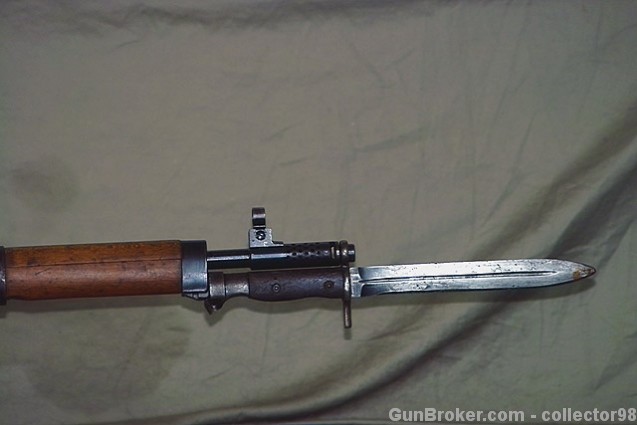
The second rifle looks, at a glance, like an SKS, but that’s mostly just an artifact of the copy of the SKS’s bayonet and stock, and the use of the same cartridge.
Egyptian Rasheed carbine chambered in 7.62 x 39mm. 10 round magazine, and folding bayonet. Ladder sight marked in Egyptian. Left side stamp marks: Serial number in what appears to be both Arabic and English, “Rasheed Made in UAR” then also in Arabic script. Bore is in excellent condition with strong lands and grooves. Bluing is in excellent condition. Wooden stock shows normal wear for an armory weapon with small dings and scratches, armory mark painted on the butt.
That mark appears to be the Arabic numeral “3”.
The action is a bit tight against the magazine and causes the bolt to drag a bit too much preventing full lock up. A good gunsmith can fix this problem.
via Egyptian Duo: Hakeem Rifle & Rasheed Carbine : Semi Auto Rifles at GunBroker.com.
The initial bid asked for this auction is $1600 for the pair.

Kevin was a former Special Forces weapons man (MOS 18B, before the 18 series, 11B with Skill Qualification Indicator of S). His focus was on weapons: their history, effects and employment. He started WeaponsMan.com in 2011 and operated it until he passed away in 2017. His work is being preserved here at the request of his family.

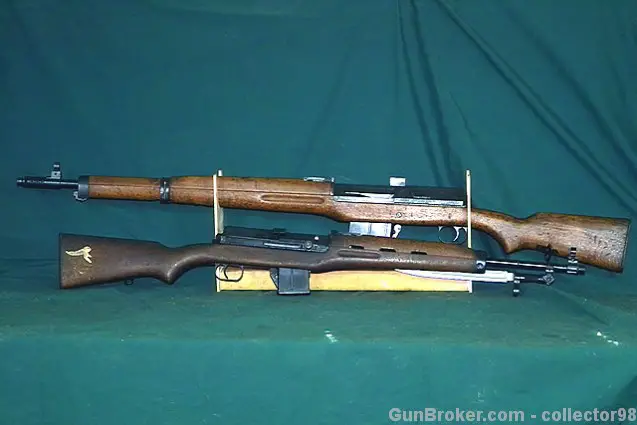
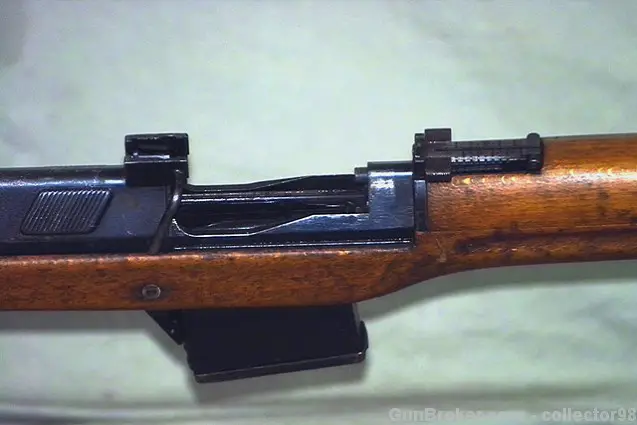
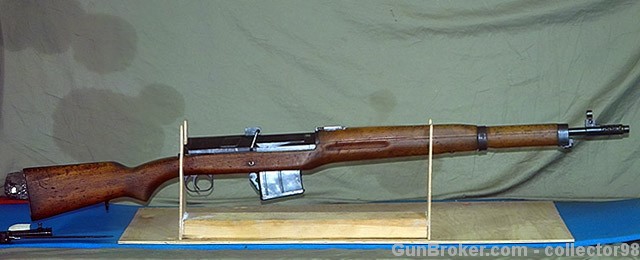
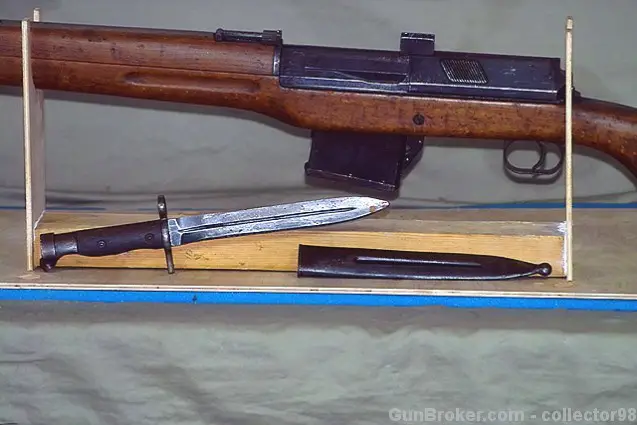
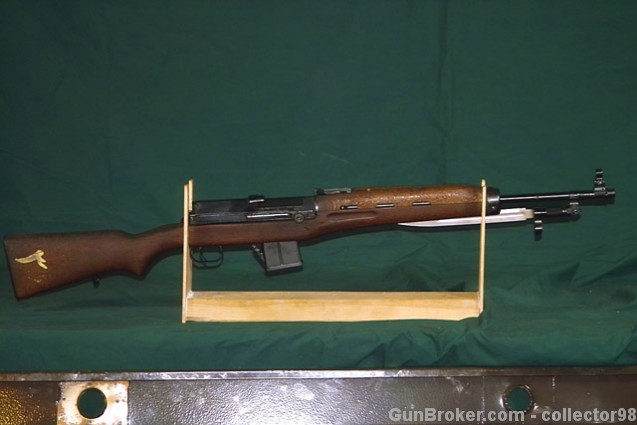
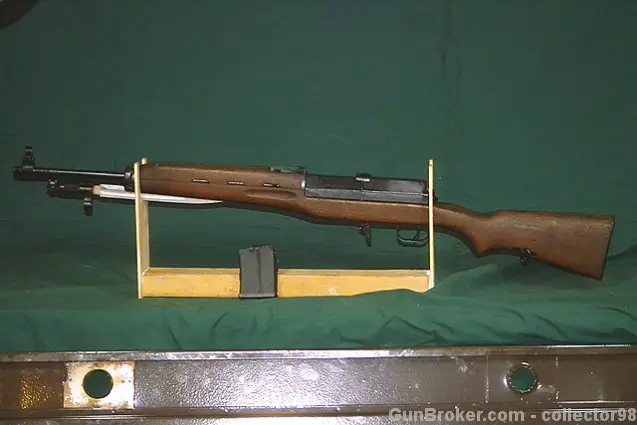
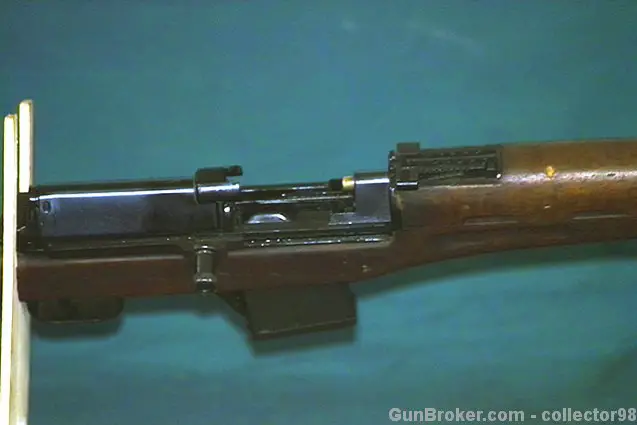
11 thoughts on “Shoot Like an Egyptian! Two Rare Rifles, One Auction.”
One cool thing about the Hakeem (pronounced with extra phlegm on the ‘k’ part…) is that if you’re handy you can adapt MG13 magazines to work with the gun. as if the pig wasn’t heavy enough already!
Ek
If the “Hakim” in question is spelled as it is elsewhere in Arabic, which is to say, as a name meaning “Wisdom” or “Ruler,” then the letter transliterated “k” is the Arabic letter “ك”, which is pronounced as a garden-variety English “k.”
The “H” in Hakim is a ح, which is kind of in between a garden-variety English “h” (represented as a “ه” in Arabic) and the “خ”, the latter of which is usually transliterated “kh” and sounds like hocking phlegm. Or speaking Scottish.
-John M.
One cool thing about the Hakeem (pronounced with extra phlegm on the ‘k’ part…)
By the same token, regarding the Egyptian license-built *Port Said* versions of the Swedish M45b SMG:
Said is not said said, I said; Said is said *Said* instead.
This brings back fond memories of drooling over shotgun news in the late 80’s and wishing I wasn’t 17 making 3.25 an hour washing cars after school. They were proportionally out of reach then as they are now!
Ah, the UAR. Also filed under “bad Arab ideas of the post-colonial era.”
https://en.wikipedia.org/wiki/United_Arab_Republic
-John M.
Someone brought a Hakeem to a vintage rifle match I attended a few years ago. Seemed like it jammed a lot, and kicked like an 8mm Mauser.
Ah, I remember when those rifles were being imported at dirt cheap prices back in early 1990’s. For a time you could even get the Hakeem cheaper than a cheap used Chinese SKS.
The Hakeem worked a lot better than the Rasheed. And that big muzzle brake on the Hakeem does a tremendous job reducing recoil, just be prepared for instant deafness if you are not wearing good hearing protection. Of course the Egyptian alternative to that Hakeem, was the very nicely made SAFN-49 in 8mm Mauser which has no muzzle brake.
I remember the first round I ever put through one of those Egyptian SAFN-49, in the prone position, firing 8mm heavy ball. Did I mention that the Egyptian SAFN has a brass buttplate which apes a British SMLE? Nice and convex shaped instead of flat like an M1? Ouch!
Interesting. I should probably write something about the SAFN. I have a Venezuelan one in one of the safes. At least, I put it in there… I think it’s back in the darkest corner.
***Interesting. I should probably write something about the SAFN. I have a Venezuelan one in one of the safes. At least, I put it in there… I think it’s back in the darkest corner.***
If nothing else, mention of the swell feature of the guide rod hole in the back of the receiver making it possible to clean the bore from the chamber end rather than the muzzle, as is necessary [and less preferable] with the M1 Garand and M14. It’s just big enough for a cleaning rod [or a bolt guide rod, of course!] and it’s so handy that way I’ve considered drilling a similar hole in the back of a target Garand for the same purpose. To date I haven’t had the heart to do it, but one of these days I’ll be in a ratty mood, or a so-so M1 will fall into my butchering hands.
ISTR I’ve seen an M14 done like that for breech-end cleaning.
An AG42 or Hakim extractor can be pretty easily adapted to fit an SVT 40 bolt.